New England Aster – A Great Fall Nectar Source for Bees
This post may contain affiliate links. Read my full disclosure here.
New England Aster, Symphyotrichum novae-angliae (formerly Aster novae-angliae) is one of my favorite native wildflowers. We’ll share how to identify and use this fall beauty, and some troubleshooting tips for growing it in the garden.
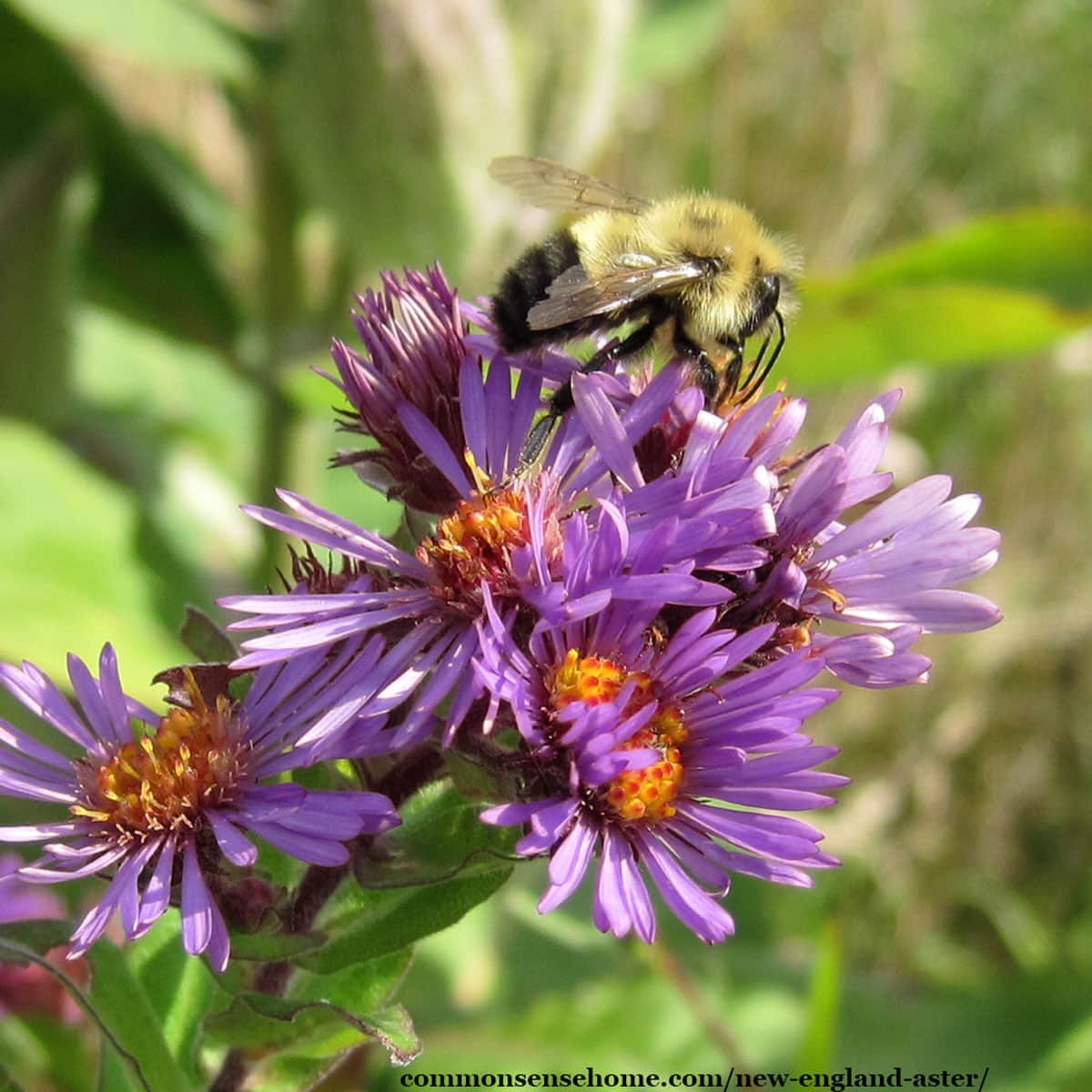
New England Aster is also known as starwort, blue chamomile, blue daisy, fall-rose, and frostweed.
What Does New England Aster Look Like?
New England Aster has smooth, lance shaped leaves, between 1-5 inches long. The leaves alternate up the hairy stems, and clasp around the stem where they meet.
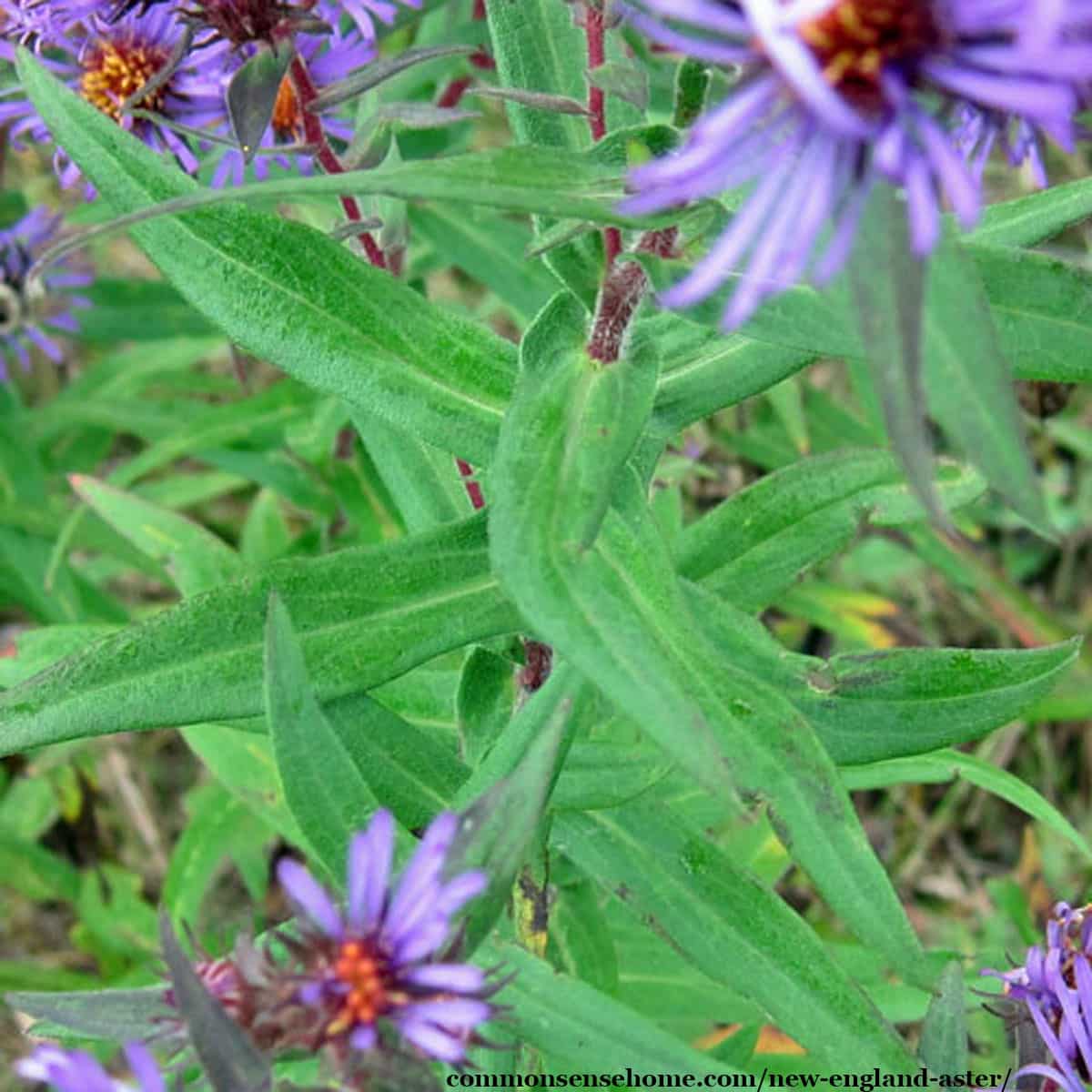
When the plants start to flower, the lower leaves often fall off early, leaving “naked legs”.
How tall do New England asters grow?
Symphyotrichum novae-angliae plant height reaches from 3-7 feet tall. By our place, they tend to be around 3-4 feet.
Flowers
The plants produce abundant flowers, with 25-100 per plant. They typically have bright purple petals and a yellow center, but they can also be pink, lavender, blue and white.
These composite flower are a wonderful fall nectar source for pollinators including native bees, honey bees, and butterflies. Fall flowers are critical for butterfly migration, and help the bees to stock up on nectar before winter.
Thankfully, these aren’t a favorite food for deer, bunnies, and other larger wildlife.
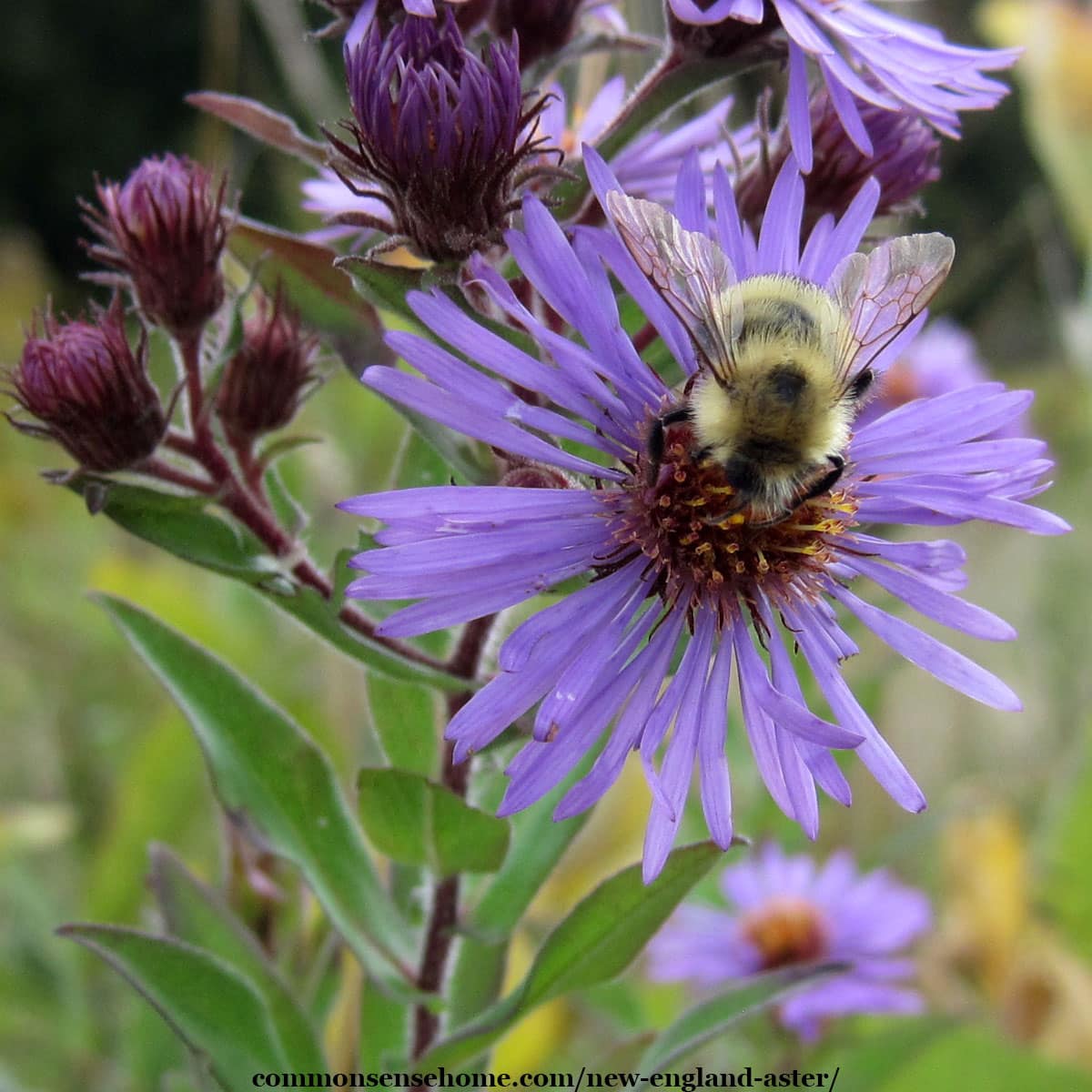
Is New England aster invasive?
While native to eastern North America, New England aster grows throughout much of North America and Europe. It ranges from USDA hardiness zones 4-8, and into Canada.
The plant prefers full sun and well-drained soil, and is commonly found in prairies and along roadsides and streams. It can grow in poor soil, but prefers a sand or clay loam. Mine pop up in small clumps here and there in the wild areas of the yard.
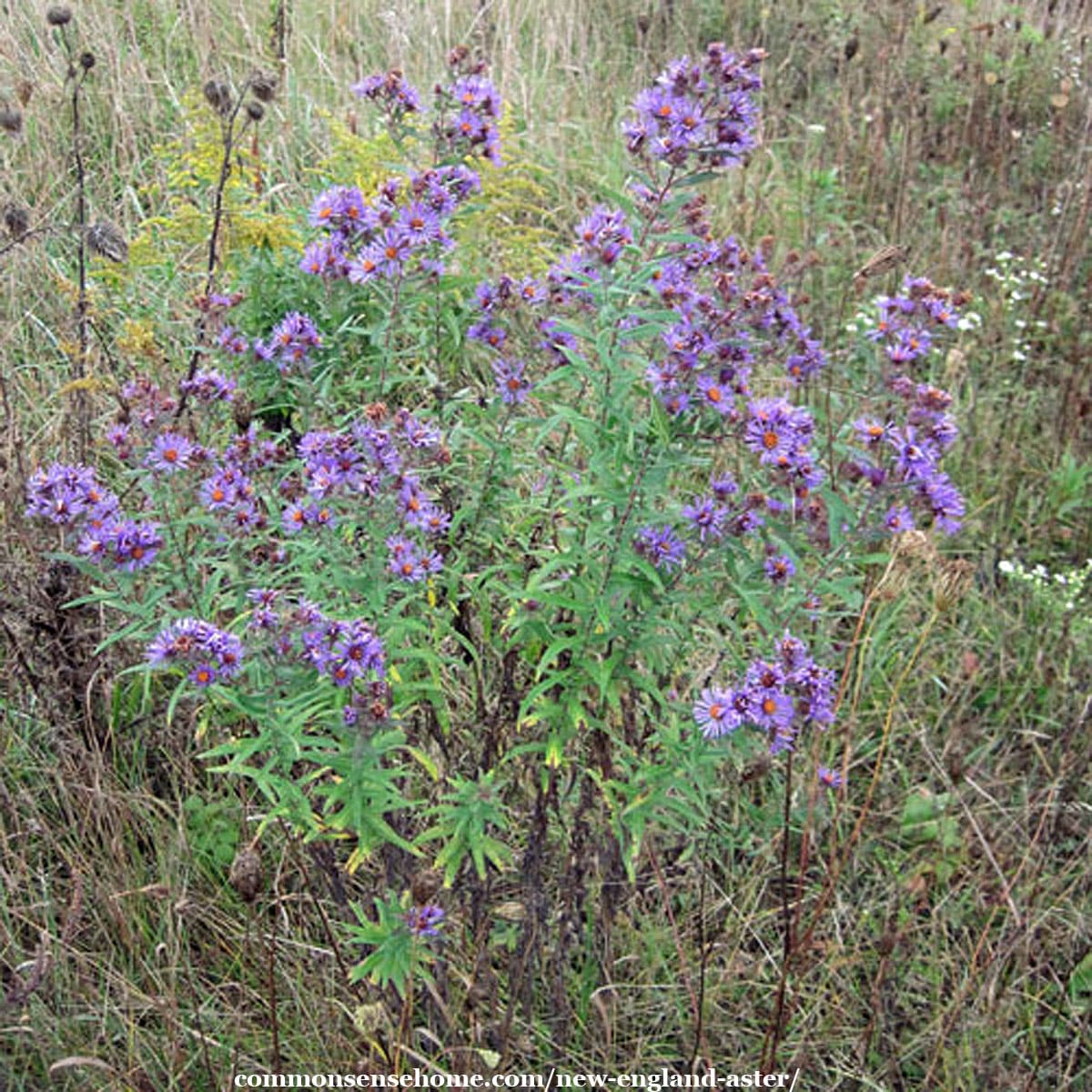
Tips for the Garden
The plant is perennial, which means it comes back year after year. If you are cultivating the plant in a garden bed, you may want to deadhead it in fall to keep the seeds from spreading.
If you’re in an area where New England aster tends to grow very tall, you can pinch them back before July. This prevents the need for staking.
Lower leaf loss at bloom time is normal, so you may want to pair them with shorter, fuller flowers to fill the bed. These plants are sometimes prone to powdery mildew, so make sure to leave enough space for good airflow.
The seeds require cold stratification for best germination. Divide mature plants in spring, or propogate with softwood cuttings. See the The University of Texas Native Plant Database for detailed propagation instructions.

Would you like to save this?
Uses for Food and Fabric Dying
The flowers and leaves of New England aster are edible, fresh or dried. Make sure they are in good condition, without mildew damage, before use.
Like the wild plants butter and eggs, goldenrod and many others, New England Aster can be used for dying fabric.
Herb Rowe writes, “The stems, leaves and flowers of asters will produce a yellow-green with alum as a mordant, brassy gold with a chrome mordant, greenish-gold with a copper mordant, bright yellow-gold with a tin mordant, dark grey-green with an iron mordant and a yellow-green with no mordant.”
Medicinal Use of New England Aster
Jim McDonald gives a poetic explanation of the New England aster’s medicinal qualities. He talks about eating the whole flowers as a gentle sedative and anti-asthmatic, and teas and tinctures made from the roots and flowers having a similar effect.
He states:
(The New England Aster) is uniquely antispasmodic for the lung tissue; it relaxes and dilates the respiratory passages.
He suggests steam inhalation using the aster blossoms for treating congestion.
To do a steam inhalation, you simply place a small handful of blossoms in a heat resistant bowl, and pour boiling water over the top. Then you hold your head over the bowel and make a tent with the decorative towel of your choice. Inhale the steam for around ten minutes.
I tried this when I first wrote this article, with good results.
Here we have our blossoms – I picked them late in the day, so they were already closed.
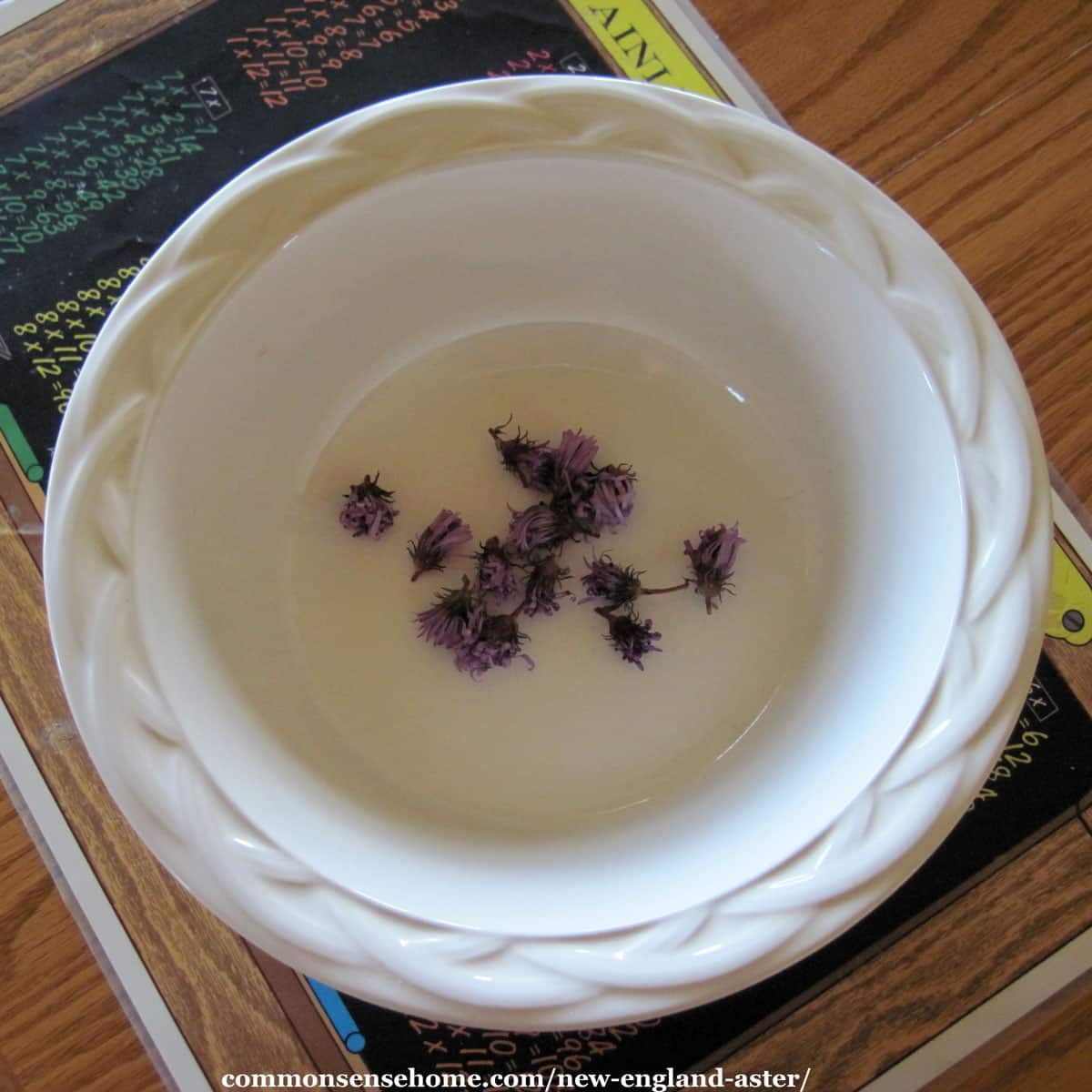
Here we have me, with my head under a towel, breathing New England aster flower steam.

At first, I felt things loosening up primarily from the steam, but as time passed, I could feel my head and chest relaxing and the sinus pain/pressure easing.
In Edible & Medicinal Wild Plants of the Midwest, the author notes that the pulverize roots are used for a poultice for pain relief. Root tea has a history of use for diarrhea and fever.
Thanks for stopping by, and if you’ve enjoyed the post, please pass it along.
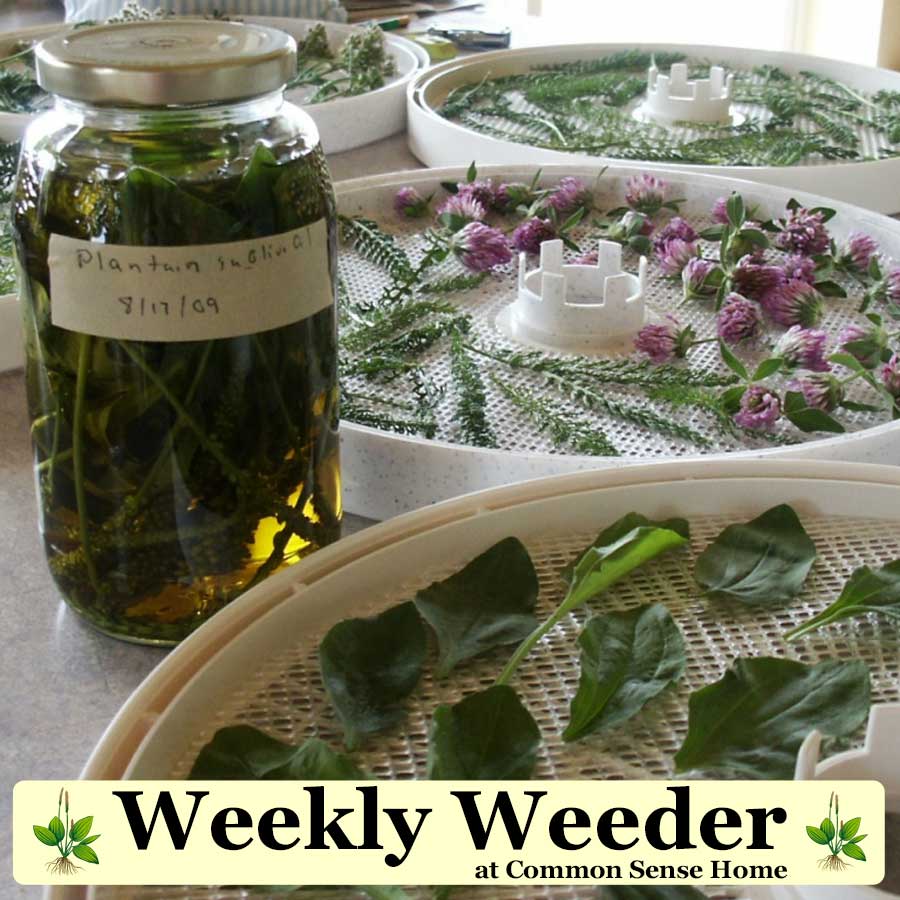
More Herbs and Wildcrafting
This article is part of the Weekly Weeder series, which features plants the grow wild on and around our Wisconsin homestead. You can see all the articles in the series on the Herbs and Wildcrafting page.
Some popular articles include:
Chicory – The Coffee Root Plant
Stinging Nettle – One of the Most Useful Wild Plants
Originally published in 2011, last updated in 2021.


So I’m thinking this might be what I know as Michealmus daisy? Have you heard it called that?
Probably a related species of Aster, if you’re referring to the European version.
Aster amellus, the European Michaelmas Daisy
Related articles: http://www.guynesom.com/AsternamesWEB.htm
I want to thank you for posting the weekly weeder. It helps bring to mind herbal and plant based medicinal and food sources that are all around use. I often take walks in wooded areas and have noticed the Aster growing wild. Now I have a reason to pay more attention to it, besides the pretty purple flowers.
You’re welcome. I haven’t had time to post as frequently as I would like, but I too enjoy my weedy wanderings.
Hi Annette! Thanks. 🙂
Did you figure out what it was in your yard? It could be something equally useful and lovely.
The heavy rains last year and this year appear to have germinated many years worth of seeds that at a guess were too deep in dry soil to sprout and to grow until now. We have had a few wild purple asters in our meadows the whole time we have been here, and they do seem to have increased in number a little this year. I spend a lot of time weeding and have never weeded so much in my life until this year! I will look at our purple asters with a much more receptive eye and gather a few for therapeutic use. I have taught our new flock of Barred rocks to relish dandelion flowers, and will try them out on the asters, as well as my husband!
This year have been encountering a purple-flowered plant with dense, narrow, daisy like petals. I initially mistook them for asters, but have found they have heart-shaped leaves and a stem that is dun colored, a little thicker and more pliable. The foliage is a dusky green that is a little lighter than aster foliage. It looks like something that could become a bush. Attempts to identify it have been in vain.
The most perplexing new invasive is a tall, white flowered plant. It grows a single 3 to 4 foot stem with leaves that look like goldenrod but bloom at the top with a cluster or clusters of white, narrow petaled blossoms with a yellow eye. A little poking around turned up the name “Doellingeria umbellata” or Parasol Aster. It appeared in profusion and began to bloom slightly later than our goldenrod, which is also useful for respiratory allergies. At the same time, my hay fever kicked up, and I freaked a little, wondering if this plant, of which we have many thousands, was the source of the sneezing, but didn’t feel symptoms while vainly trying to clear them out. Desperate early Summer weed pulling was an effort in vain, since the roots break off easily, and the plant regrows with vigor.
I have battled it out of my vegetable garden zone, and hope to enjoy its vast drifts of white blossoms crowding our goldenrod.
I love this series, Laurie. I was all excited thinking it was something that just started blooming in my yard but I realize it's not the same thing. Nuts anyway. xo, Annette
Thanks for stopping by, Jo. One of things I've enjoyed most about these posts is finding out how beautiful flowers also have health benefits.
Interesting information. This is one plant I didn't know much about.